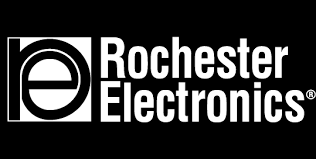Rochester Electronics is the QFN Solution
Supporting QFN packaging assembly needs stateside
Quad Flat No-lead (QFN) packages began development in the mid-1990s. By mid-1999 the QFN package had been adopted as the common choice for many applications. The small form factor, and leadless, thinner packages allowed for reduced board space and height, and the exposed pad provided better thermal performance. The lead pitch, length, and body sizes became standard throughout the industry and were adopted by JEDEC. Body sizes now range from 1x2mm to 14x14mm with various lead counts, lead pitches, lengths, and package options. Punched and pocket-molded, as well as the sawn versions are available.
Automotive QFNs have multiple options on the sawn version for a wettable flank, with the step cut being heavily desired. The wettable flank was initially a sawn-through plated dimple, leaving a quarter sphere, but the option has largely disappeared, due to issues with tolerances and burrs. The automotive industry requires wettable flanks for solder joint inspection and better board-level reliability.
There are many advantages of QFN over Quad Flat Packs (QFPs). The ability to package more devices per leadframe by increasing density has kept costs down and increased throughput and yield on the QFN. The cost of tooling QFPs is significantly higher due to the mold, trim, and form tooling required, which can cost up to $500,000 per body size and lead count. The ability to mold many packages in one block on the QFN side, and then singulate to then chosen package body size has also made the QFN more versatile. Additionally, using the same mold for different package body sizes, without requiring any trim and form tooling, is an enormous cost-saver. The QFN is ultimately a better solution for the end customer’s board, and is the preferred assembly method for semiconductor manufacturers, alongside BGAs and Cu-Pillar Flip Chip devices.
Rochester Electronics is certified and supports all QFN body sizes. We provide direct replacements for 28Ld PLCC footprints with QFN packages to meet customer requirements. Exposed pads in footprint-compatible solutions, along with sintered Ag die attach solutions, can result in a significantly improved form factor and thermal performance. Drop-in replacements only require a pad on the board to take advantage of potential thermal enhancements. Our drop-in solution is compatible with current boards, as well, leaving the pad unsoldered.
We offer the same drop-in solution for SOIC footprints, and other packages, to support customer needs. Rochester assembles a full range of body sizes and lead counts of QFN packages stateside at our Newburyport facility. Our tooling and equipment setup allows for quick-turn prototyping and low-to-medium volume production for all QFNs. Regardless of the QFN requirement, Rochester delivers with confidence and quality.

As a licensed semiconductor manufacturer, Rochester has manufactured over 20,000 device types. With over 12 billion die in stock, Rochester has the capability to manufacture over 70,000 device types.
For over 40 years, in partnership with over 70 leading semiconductor manufacturers, Rochester has provided our valued customers with a continuous source of critical semiconductors.
Rochester offers a wide range of in-house assembly capabilities providing quick-turn delivery. We have over 240,000 square feet dedicated to assembly services and over 100,000 square feet focused on plastic assembly and lead finishing. We offer a wide range of options for plastic packaging including:
- Automated saw, die attach, and wire bond equipment.
- Full automold and semi-automated mold equipment.
- Flexible manufacturing space supporting a range of volumes.
- Lead frame options include design/replication, pre-plated, spot plated.
- Automated inline inspection.
- Gold ball bond or copper ball bonding.
- Epoxy die attach.
- Custom assembly solutions.
- Qualification services available.
Learn why the semiconductor industry has moved towards QFN and DFN Assemblies
WATCH: To learn more about Rochester’s Plastic Assembly Capabilities
Subscribe to Our Newsletter
Get the latest news, articles, and resources in your inbox weekly.
Manufacturers




